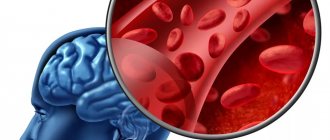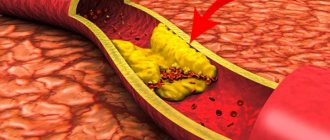Brain lymphoma belongs to the so-called type. non-Hodgkin's and is characterized by a very high degree of malignancy. The neoplasm directly affects the brain tissue and its soft membranes. At the same time, at the first stage, like many other oncological diseases, it rarely gives symptoms, which, naturally, complicates diagnosis and delays time. Also, due to its unfortunate location and the presence of a physiological barrier designed to protect the brain from toxins, it is necessary to use specific treatment that differs from standard therapy for lymphoma.
Questions and Answers What are the main symptoms of lymphoma?
Types of lymphomas
There are two main groups of the disease – Hodgkin lymphoma and non-Hodgkin lymphoma. They develop from different types of cells, differ in their course and respond differently to therapy.
Hodgkin's lymphoma (HLH) is lymphogranulomatosis, malignant granuloma. Characterized by damage to B-lymphocytes. It has an aggressive course, but responds well to treatment. Source: I.I. Yakovtsova, V.D. Sadchikov, V.M. Sadchikova, O.V. Dolgaya, S.V. Danilyuk, A.E. Oleynik Hodgkin's lymphoma: evolution of clinical classifications // Bulletin of problems of biology and medicine, 2013, No. 3, v. 2 (103), pp. 62-69
Non-Hodgkin's lymphomas (NHL) affect not only B-, but also T-lymphocytes. A total of 30 subtypes have been identified. Most of them are less aggressive, but also more difficult to treat.
Classification of non-Hodgkin's lymphomas in accordance with the 4th edition of WHO 2008:
- B-lymphoblastic NHL;
- heavy chain disease;
- B-cell prolymphocytic leukemia;
- hairy cell leukemia;
- diffuse large B-cell NHL;
- Burkitt's leukemia;
- NHL from mantle zone cells;
- lymphoplasmacytic NHL;
- mediastinal diffuse large B-cell NHL;
- nodal marginal zone B-cell NHL;
- primary exudative NHL;
- plasma cell plasmacytoma/myeloma;
- splenic marginal zone NHL;
- follicular NHL;
- chronic lymphocytic leukemia;
- extranodal marginal zone B-cell NHL;
- T-lymphoblastic NHL;
- aggressive NK cell leukemia;
- anaplastic large cell NHL with primary skin lesions;
- anaplastic large cell NHL with primary systemic involvement;
- angioimmunoblastic T-cell NHL;
- hepatolienal T-cell NHL;
- Sézary's mycosis fungoides;
- unspecified peripheral T-cell NHL;
- T-cell panniculitis-like NHL of the subcutaneous tissue;
- T-cell leukemia;
- T-cell leukemia of large granular lymphocytes;
- T-cell prolymphocytic leukemia;
- extranodal NK/T-cell lymphoma of the nasal type;
- enteropathic T-cell NHL.
The most common lymphomas in clinical practice are: Hodgkin, follicular and diffuse large B-cell. Source: G.S. Tumyan Non-Hodgkin lymphoma // Clinical oncohematology, 2015, 8(4), pp.455-470
According to the nature of the lesion and pathogenesis, all lymphomas are divided into 3 main groups:
- aggressive – they are characterized by rapid development with pronounced symptoms;
- extranodal - the primary lesion is formed not in the lymph nodes, but immediately in the internal organs;
- indolent - distinguished by their slow and favorable course; may not require therapy; sometimes it is enough to see a doctor regularly.
For each type of lymphoma there is a special treatment regimen.
Symptoms of brain lymphoma
The clinical symptoms of this disease are similar to other cancers of the central nervous system. The main manifestations of brain lymphoma are:
- frequent headaches,
- drowsiness,
- epilepsy attacks,
- emotional instability,
- speech disorders,
- blurred vision,
- numbness and weakness in the hands,
- hallucinations.
In the later stages of the disease, the patient experiences an inadequate emotional reaction and memory loss. These signs characterize disease damage to the temporal and frontal lobes.
Stages of lymphomas
Depending on the extent of the tumor, the stage of the pathological process is determined. In accordance with the international Ann Arbor classification, there are 4 stages of the disease:
- At stage 1, one group of lymph nodes may be involved in the lymphoma process.
- On the 2nd, the involvement of two or more groups on one side of the diaphragm is allowed.
- At stage 3, the lymph nodes on both sides of the diaphragm are affected.
- At the 4th stage, internal organs are involved in the process - the brain, heart, liver, spleen, stomach, intestines.
Each stage is additionally marked with titers A and B. Titer A indicates the absence of key symptoms - fever, severe night sweats and sudden weight loss. Titer B indicates that such manifestations exist.
What is brain lymphoma?
Cerebral lymphoma is a malignant neoplasm that grows from the meninges or substance of the brain. This disease is quite rare, it accounts for only 1-2% of the total number of brain tumors. It is precisely because the disease is rare that treatment of brain lymphoma in Israel is recommended - since it is here that the professionalism of doctors is high enough to defeat this disease.
Like most cancers, lymphoma develops gradually and does not bother the patient in the initial stages.
It is for this reason that in many cases it is not always possible to identify this disease in time and begin treatment on time.
Causes of lymphomas
A single causative factor for the development of the disease has not been identified. At the moment, scientists believe that the pathological process is triggered by a complex of reasons. These include:
- hereditary predisposition;
- regular contact with toxins and carcinogens;
- herpes virus, hepatitis, Helicobacter pylori and other infectious diseases;
- autoimmune and immunodeficiency conditions;
- recurring pneumonia;
- immunosuppressive therapy after kidney transplantation, stem cell transplantation, etc.;
- surgery to insert breast implants (presumably).
Tomotherapy for lymphomas
Standard radiation therapy for both Hodgkin's lymphoma and non-Hodgkin's lymphoma sometimes causes quite serious complications in the form of radiation damage to the lungs and heart, as well as the risk of cancer in other locations.
In this situation, Tomotherapy becomes a real salvation, which allows you to deliver a high dose of radiation to a strictly defined area with minimal impact on healthy tissue. (see link)
This reduces the risk of radiation complications and increases the effectiveness of treatment. The advantages of remote irradiation using the Tomotherapy HD device are also:
- possibility of use for relapses;
- effectiveness even at later stages;
- irradiation of several lesions in one session;
- minimal discomfort during the procedure.
Symptoms
In addition to the main symptoms - fever, severe night sweats and sudden weight loss - the pathology is characterized by:
- weakness and increased fatigue;
- temperature increase;
- weight loss;
- enlarged lymph nodes (often, but not always; they are painless and do not shrink as a result of treatment with antibiotics, as with infectious diseases).
Sometimes itchy skin is possible. When a chest tumor is affected, difficulty breathing, shortness of breath and cough are possible. When the tumor is localized in the abdominal cavity, indigestion, nausea, vomiting, and bursting pain in the abdomen and lower back are observed. When the bone marrow is damaged, patients complain of pain in the bones. If the pathology involves facial and cranial structures, there are complaints of headaches and bursting pain in the face and neck.
Treatment of non-Hodgkin's lymphomas
The surgical method has limited use in patients with NHL. Typically, the operation involves removing part of the tumor for examination to clarify the diagnosis.
Only in the case of isolated damage to an organ, for example the stomach, is surgical intervention possible. However, even in this case, preference is often given to the radiation method.
In patients with NHL, external irradiation with high-energy sources is usually used. In patients with stages I and II NHL, radiation may be the primary treatment, but a combination of chemotherapy and radiation is most often used.
Radiation therapy can be used as a palliative (temporary relief) method for damage to the brain and spinal cord, as well as to reduce pain in the event of compression of nerve endings.
Radiation therapy may cause minor skin changes and increased fatigue.
Other side effects are related to the location of the radiation.
Thus, radiation therapy to the abdominal area can lead to enteropathy and diarrhea.
Radiation to the chest can cause damage to lung tissue and difficulty breathing.
Irradiation of the lungs, especially in smokers, sometimes leads to the development of cancer of the same location.
Serious side effects of brain radiation take 1 to 2 years to appear and include headaches and memory problems.
It is important to keep in mind that the side effects of chemotherapy may be worsened by radiation.
Chemotherapy refers to the use of anticancer drugs to destroy tumor cells. In this case, many drugs and their combinations are used.
Treatment is carried out in the form of courses at intervals of 2-4 weeks. Chemotherapy can be carried out both in the department and in outpatient (outpatient) settings, depending on the complexity of the treatment, its side effects, the patient’s condition and other factors.
The patient may receive one or more treatment regimens depending on the effectiveness of the therapy.
Antitumor therapy destroys tumor cells, but at the same time damages normal rapidly dividing cells, which include bone marrow, the mucous membrane of the oral cavity and gastrointestinal tract, and hair follicles. The severity of side effects depends on the type, total and total dose of the drug, as well as the duration of chemotherapy.
As a result of treatment, the patient may experience: baldness, the appearance of mouth ulcers, increased susceptibility to infections due to a decrease in the number of white blood cells, bleeding as a result of a decrease in the number of platelets, fatigue due to a decrease in the level of red blood cells, loss of appetite.
These side effects are temporary and disappear after stopping treatment.
Currently, it is possible to prevent and treat complications of chemotherapy by prescribing antiemetic drugs, antibiotics, growth factors that stimulate the production of leukocytes, antiviral and antifungal drugs, etc.
To prevent infectious complications it is necessary:
- avoid contact with infection
- wearing surgical masks by patients, visitors and staff
- use sterile surgical gloves
- wash your hands thoroughly
- do not eat raw vegetables and fruits, as well as foods that may contain germs
- do not contact children, who are more often carriers of infections than adults
Tumor lysis (disintegration) syndrome occurs as a result of the rapid effect of chemotherapy in patients with large lymphomas. The contents of decayed tumor cells enter the bloodstream and impair the function of the kidneys, heart and central nervous system (CNS). This condition can be prevented by prescribing a large volume of fluid and drugs such as soda, allopurinol.
Chemotherapy anticancer drugs can directly damage the kidneys, liver, testicles, ovaries, brain, heart and lungs. However, the use of modern means of prevention and treatment makes it possible to avoid most of these complications.
The most serious complication of chemotherapy is the occurrence of a second malignant disease, in particular leukemia. Fortunately, this complication is rare in patients with lymphoma.
Immunotherapy uses substances that are normally produced by the immune system. These substances can destroy lymphoma cells, slow their growth, or activate the patient's immune system to effectively fight lymphoma.
Interferon is a hormone-like substance that is produced by white blood cells to fight infection. Currently, there are different types of interferon. The use of interferon may cause the lymphoma to stop growing or shrink. The drug is usually used in combination with chemotherapy.
Side effects of interferon treatment include increased fatigue, fever, chills, headache, muscle and joint pain, and mood changes.
Monoclonal antibodies. Antibodies are produced by the immune system to fight infections. Monoclonal antibodies are produced in the laboratory and are used to fight lymphoma cells.
When standard therapy is ineffective in patients with lymphoma, bone marrow or peripheral stem cell transplantation is sometimes used. This allows high doses of chemotherapy to be used to kill resistant tumor cells.
A distinction is made between transplantation of autologous (from the patient himself) and allogeneic (from a donor) bone marrow or peripheral blood cells. Damage to the bone marrow or peripheral blood by lymphoma cells precludes the use of autologous transplantation.
Bone marrow or peripheral stem cells are obtained from the patient or donor before intensive chemotherapy or radiation, and then returned to the patient after treatment to restore blood counts. After 2-3 weeks, the levels of leukocytes begin to increase, and then platelets and red blood cells.
Side effects and complications of bone marrow and peripheral stem cell transplantation are divided into early and late. Early side effects are not fundamentally different from those associated with high-dose chemotherapy.
Diagnosis of lymphomas
The diagnosis is made based on the results of a microscopic examination of a biopsy - a sample of lymphoid tissue. Based on the results of a differential biopsy, the type of tumor is determined.
To identify tumors in different parts of the body, radiation diagnostic methods are used: radiography, scintigraphy, magnetic resonance, positron emission and computed tomography. If it is necessary to clarify some features of the pathological process, laboratory blood tests are prescribed - immunoenzyme typing using flow cytometry, molecular genetic and cytogenetic studies. Source: Wang HW, Balakrishna JP, Pittaluga S, Jaffe ES Diagnosis of Hodgkin lymphoma in the modern era // Br J Haematol. 2021 Jan;184(1):45-59. doi: 10.1111/bjh.15614. Epub 2021 Nov 8
Diagnosis of brain lymphoma
If there is a suspicion of brain lymphoma, then the patient is first prescribed an MRI. This procedure allows you to visualize and study the state of the brain, so you can identify the presence of a disease. Occasionally, to clarify the diagnosis, doctors may resort to a number of additional studies, such as:
- lumbar puncture with further examination of the cerebrospinal fluid for the presence of cancer markers;
- stereotactic biopsy;
- biopsy (taking a sample of tumor tissue through a small hole in the skull);
- trephine biopsy (obtaining a tissue sample through a full opening of the skull);
- blood tests.
If there are suspicions about the secondary nature of the disease, the patient is prescribed a number of additional studies, such as ultrasound, radiography. In rare cases, a bone marrow biopsy is resorted to. In some cases, secondary brain damage can cause sudden hemorrhage and ischemic cerebral infarction.
Treatment methods
The most common treatments for lymphomas are:
- radiation therapy;
- chemotherapy;
- radiotherapy;
- biological therapy;
- stem cell transplantation;
- surgical intervention.
They are used both as separate courses and in combination. The choice of treatment regimen depends on the type of tumor and the general condition of the patient.
Treatment tactics
Indolent lymphomas may not require treatment, but only observation by an oncohematologist. Therapy is indicated at the first signs of progression of the pathological process. For localized tumors, radiotherapeutic irradiation of the affected structures is sufficient. For generalized forms, chemotherapy is indicated.
In case of an aggressive course of the disease, one of the most effective treatment regimens is chemotherapy according to the CHOP protocol in combination with immunotherapeutic drugs from the group of monoclonal antibodies. For highly aggressive types of tumors, high-dose chemotherapy in combination with hematopoietic stem cell transplantation may be prescribed.
Treatment of certain types of lymphomas
The main method of treatment for Hodgkin lymphoma LGM is chemotherapy. Antitumor cytotoxins are prescribed in different dosage forms. Chemotherapy is cyclical in nature - drug courses alternate with periods of rehabilitation. Source: Sermer D, Pasqualucci L, Wendel HG, Melnick A, Younes A Emerging epigenetic-modulating therapies in lymphoma // Nat Rev Clin Oncol. 2019 Aug;16(8):494-507.doi: 10.1038/s41571-019-0190-8
Radiotherapy - high-power radiation - as an independent treatment for LM may be justified in some cases - when one, maximum two groups of lymph nodes are involved in the process. More often it is prescribed in combination with chemotherapy. In the later stages of the disease, the method is indicated as palliative treatment.
Biological drugs - monoclonal antibodies - are used in the treatment of lymphoma to activate the immune system. Radiation therapy is carried out regionally, in the area of the lymph nodes involved in the oncological process.
In some cases, removal of the spleen is justified in the treatment of LGM. If enlarged lymph nodes are compressing neighboring organs, their excision may be indicated.
In case of relapses of the disease, as well as in order to destroy cancer cells that are not affected by standard doses of radiation and chemotherapy, high therapeutic doses are prescribed, which destroy bone marrow tissue along with the tumor. After such a course, organ transplantation is indicated. Your own or donor stem cells taken in advance form a new immune system.
A combination of radiation and chemotherapy also demonstrates good results in the treatment of NHL. In some cases, the innovative technique of lumbar puncture administration of antitumor antibodies is successfully used.
NHL with an aggressive course is difficult to treat. The most effective method to combat this disease is a bone marrow transplant.
Risk factors for non-Hodgkin's lymphoma
Risk factors may be genetic (inherited), lifestyle-related, or environmental.
Age is the most important risk factor for NHL. Most cases of NHL are diagnosed in people over 60 years of age.
Congenital defects of the immune system not only predispose to infections, but also increase the risk of developing NHL in children and young adults.
Obesity may increase the risk of NHL.
Radiation increases the risk of leukemia, thyroid cancer, and NHL. Patients who received radiation therapy for cancer later have an increased risk of developing NHL. This risk is further increased when a combination of chemotherapy and radiation is used.
Benzene, herbicides, and insecticides are associated with an increased risk of NHL.
Acquired immunodeficiency caused by the use of various drugs in organ transplant patients increases the risk of developing NHL.
Human immunodeficiency virus infections are associated with an increased risk of some types of NHL.
Epstein-Barr virus is associated with an increased risk of developing Burkitt's lymphoma and other lymphomas, especially in people with AIDS.
The bacterium Helicobacter pylori , which causes stomach ulcers, can also lead to lymphoma of the same location.
Elimination (where possible) of known risk factors can help to prevent this disease to a certain extent.
Forecasts
The prognosis for patients with lymphoma depends on the stage of the process, the age and condition of the patient, as well as on the results of therapy. With Hodgkin's lymphoma, young patients in the early stages usually make a full recovery. In 8 out of 10, stable remission is achieved. The five-year survival rate for stage 1 is 95%, for stage 4 – 65%.
For NHL of the spleen, lymph nodes and mucous membranes, the average five-year survival rate is about 70%. For NHL of the gastrointestinal tract, salivary glands, and eye orbits, the average five-year survival rate is about 60%. The prognosis for aggressive NHL of the mammary glands, ovaries, central nervous system and bones is less favorable - the five-year survival rate is on average less than 30%.
Incidence of non-Hodgkin's lymphomas (NHL)
More than 90% of NHL is diagnosed in adult patients. Most often, NHL occurs between the ages of 60 and 70 years. The risk of developing this tumor increases with age.
The lifetime personal risk of developing NHL is approximately 1 in 50.
Since the beginning of the 70s, there has been an almost twofold increase in the incidence of NHL. This phenomenon is difficult to explain. This is mainly associated with infection caused by the human immunodeficiency virus. Part of this increase can be attributed to improved diagnostics.
Since the late 90s, there has been a stabilization in the incidence of NHL.
NHL is more often detected in men compared to women.
In 2002, 5,532 cases of NHL in adult patients were identified in Russia.
In the United States in 2004, according to preliminary data, 53,370 cases of NHL in adults and children are expected.
Clinical recommendations after lymphoma treatment and prevention
Avoid risk factors - intoxication and contact with carcinogens. Get vaccinated, and if you get an infectious disease, do not self-medicate.
At the first sign of lymphoma, consult your doctor. Get annual preventive medical examinations, eat right, and try to lead a healthy lifestyle.
Sources:
- I.I. Yakovtsova, V.D. Sadchikov, V.M. Sadchikova, O.V. Dolgaya, S.V. Danilyuk, A.E. Oleinik. Hodgkin's lymphoma: evolution of clinical classifications // Bulletin of problems in biology and medicine, 2013, No. 3, vol. 2 (103), pp. 62-69.
- G.S. Tumyan. Non-Hodgkin's lymphomas // Clinical oncohematology, 2015, 8(4), pp.455-470.
- Wang HW, Balakrishna JP, Pittaluga S, Jaffe E. Diagnosis of Hodgkin lymphoma in the modern era // Br J Haematol. 2019 Jan;184(1):45-59. doi: 10.1111/bjh.15614. Epub 2021 Nov 8.
- Sermer D, Pasqualucci L, Wendel HG, Melnick A, Younes A. Emerging epigenetic-modulating therapies in lymphoma // Nat Rev Clin Oncol. 2021 Aug;16(8):494-507.doi: 10.1038/s41571-019-0190-8.
The information in this article is provided for reference purposes and does not replace advice from a qualified professional. Don't self-medicate! At the first signs of illness, you should consult a doctor.
Lymphomas: diagnosis
In order to accurately make a diagnosis, CELT oncohematologists prescribe the following tests to the patient:
- collection of tumor tissue samples by biopsy, laparoscopy or puncture and their histological and cytological studies;
- Ultrasound scanning, radiography, computer or magnetic resonance imaging of the mediastinum, chest, peritoneum, lymph nodes, mammary glands;
- Laboratory studies of the biochemical complex, assessment of risk factors, as well as the functions of internal organs.
Non-Hodgkin's lymphoma
For all morphological variants of non-Hodgkin's lymphomas, damage to both the lymph nodes as a whole and their individual groups, Waldeyer's lymphoid ring and the gastrointestinal tract is equally common. More frequent primary lesions of the retroperitoneal lymph nodes and abdominal cavity, bones and soft tissues are observed in lymphoblastic variants, and the spleen in prolymphocytic variants. The pathological process, regardless of the morphological variant of the disease, in most cases first spreads to the areas adjacent to the lymph nodes. Damage to adjacent groups of lymph nodes more often occurs with the lymphoblastic variant.
Early extranodal metastasis, metastasis to the bone marrow, involvement of the liver and spleen in the pathological process are somewhat more common in the prolymphocytic variant, and bone marrow damage and leukemia are more common in the presence of cells with a round and split nucleus. However, with blast variants, bone marrow involvement and an increase in the size of lymph nodes occur earlier.
The greatest differences between morphological variants are noted when assessing survival. The five-year survival rate for the prolymphocytic variant of small cells with a split and round nucleus is 70 and 53%, respectively. With the prolymphocytic-lymphoblastic variant of large cells with a split nucleus, survival rates are close to those with blast variants and amount to 14-21 months.
Survival rates in stages I-II of non-Hodgkin lymphomas with a high degree of malignancy with primary lesions of the gastrointestinal tract are significantly higher than those observed in the general group of patients with these variants.
Primary non-Hodgkin's lymphoma of the spleen is a rare localization (less than 1%), while its involvement in the pathological process is often (40-50%) found in lymphosarcoma. Somewhat more often, primary damage to the spleen is detected in the prolymphocytic variant. More often, with splenic lymphoma, involvement of the bone marrow in the pathological process is noted. However, with the lymphoblastic variant, metastases from the spleen are more often localized in the abdominal lymph nodes.
The most common lung involvement is found in low-grade non-Hodgkin lymphomas. The prognosis for this primary localization is determined by the morphological variant. Damage to the nervous system is observed, as a rule, in blast variants of non-Hodgkin lymphomas.
The nodular type of non-Hodgkin's lymphoma, within the limits of any histological type, is characterized by a more favorable course of the disease. With the lymphocytic variant, despite the rapid generalization of the process, a relatively benign course is also noted.
The clinical and hematological picture of certain morphological variants of diffuse lymphosarcoma has its own characteristics. Thus, the lymphocytic variant is characterized by a fairly early generalization of the process. In contrast to chronic lymphocytic leukemia, it is often possible to trace the sequence of involvement and pathological process of various groups of lymph nodes; histological examination of the bone marrow reveals a nodular or nodular-diffuse type of lesion (in contrast to the diffuse nature of infiltration in chronic lymphocytic leukemia).
Generalization of the process occurs on average in 3-24 months. Bone marrow damage can also be detected with a normal hemogram (in 47% of patients it is unchanged at the time of diagnosis); in some patients lymphocytopenia is detected. Despite the early generalization and involvement of the bone marrow in the process, the prognosis of the disease in this variant is relatively favorable (up to 75% of patients live more than 5 years).
The T-cell variant of lymphosarcoma is distinguished by its clinical and hematological uniqueness: splenomegaly, generalized enlargement of lymph nodes, infiltrates in the lungs, skin lesions. The primary focus is the T-dependent paracortical region of the lymph nodes. There is high lymphocytosis in the blood, the nuclei of most lymphocytes are twisted. The average life expectancy for this rare variant is short - 10 months.
With a rare lymphoplasmacytic cytological variant, the clinical syndromes of the disease are determined by the location of the tumor, the extent of the process, and often by the amount of IgM in the blood serum.
The prolymphocytic variant is found in 45-51% of all cases of lymphosarcoma. It often reveals an increase in the occipital, parotid, popliteal, and lymph nodes. Despite the moderate generalization and frequent leukemia (in 25-45%) of the process, with this option the five-year survival rate of patients is 63-70%. With the prolymphocytic-lymphoblastic subvariant, the prognosis is less favorable.
The lymphoblastic variant, quite heterogeneous in its morphological (with a twisted, untwisted nucleus, macro-, microforms) and immunological (T- and B-phenotype) characteristics, is most often found in children. Lymph nodes of various locations are affected. The disease is characterized by the rapid growth of tumors and the involvement of new anatomical zones in the process. More often than with other lymphosarcoma, the hemogram shows initial cytopenia and a T-cell phenotype of lymphocytes.
Burkitt's lymphoma of B-cell origin is classified as a lymphoblastic type of lymphosarcoma. Its classic version is manifested mainly by damage to the bones (especially the lower jaw), kidneys, ovaries, lymph nodes of the retroperitoneal areas, lungs, and parotid salivary glands. Bone marrow is rarely involved in the process. In localized forms, the prognosis is favorable with long-term remissions up to complete cure. The most common type of T-lymphoblastic lymphoma is “prothymocyte.” In the vast majority of cases, the mediastinum is affected, metastases are detected in the central nervous system and lungs; in 50% of cases - leukemia. The disease is more often detected in boys in the first 5 years of life and adolescents 13-16 years old.
Immunoblastic lymphosarcoma (B-cell phenotype predominates) can develop as a primary tumor of the gastrointestinal tract, lymph nodes, Waldeyer's ring, etc. Cytopenia is often detected, leukemia - in rare cases. The disease progresses quickly, the five-year survival rate of patients is 21-32%, however, removal of a solitary tumor can contribute to long-term remission and even cure. Immunoblastic lymphosarcoma as a secondary process is described in multiple myeloma, Waldenström's macroglobulinemia, and other lymphoproliferative diseases.
Mycosis fungoides is a malignant lymphoid tumor, always initially arising in the upper layers of the dermis, consisting of polymorphic T-helper cells. The first manifestation of the disease may be nonspecific inflammation. The diagnosis is verified by histological and cytochemical examination (lymphoid cells give a positive reaction to acid phosphatase, beta-glucuronidase and acid nonspecific esterase). There is a point of view that the early, chronic phase of the disease may be reactive, while the “lymphoblastic” phase represents true malignant transformation. Sezary syndrome, characterized by the appearance in the hemogram of lymphoid cells with a brain-like nucleus, is considered as the leukemic phase of mycosis fungoides.
The histiocytic variant of malignant non-Hodgkin lymphoma is very rare. Its clinical picture is varied. Metastases can be found in many organs. Leukemia and bone marrow involvement are rare, and cytopenia is common.
The nosological affiliation of the identified new forms remains debatable. Thus, Lennert lymphoma, initially described as an unusual variant of lymphogranulomatosis with a high content of epithelioid cells, is proposed to be considered an independent form. The absence of typical Berezovsky-Sternberg cells, fibrosis, high content of immunoblasts, plasma cells, transitions to lymphosarcoma served as the basis for delimiting this disease from lymphogranulomatosis and distinguishing it under the name “Lennert lymphoma” (malignant lymphoma with a high content of epithelioid histiocytes, lymphoepithelial lymphoma, epithelioid cell lymphoma ). A feature of the clinical manifestations of Lennert lymphoma is the frequent involvement of the palatine tonsils and lymph nodes, the elderly age of patients, the presence of polyclonal gammopathy and a history of allergic skin rashes.
Angioimmunoblastic lymphadenopathy with dysproteinemia (lymphogranulomatosis X), described in recent years, is also proposed to be classified as non-Hodgkin's lymphoma. Clinically, the disease is manifested by fever, weight loss, skin rashes, generalized lymphadenopathy, often in combination with hepato- and splenomegaly, persistent hyperglobulinemia, and sometimes signs of hemolysis. Histologically, a triad is characteristic: proliferation of small vessels, proliferation of immunoblasts, deposition of PAS-positive amorphous masses in the walls of blood vessels. The number of eosinophils and histiocytes varies, but sometimes the number of the latter is noticeably increased. There may be giant cells and small foci of necrosis. A number of researchers regard the changes described above not as malignant lymphoma, but as reactive, associated with disturbances in the B-lymphocyte system.
Lymphocytes can be localized in various organs and tissues (spleen, lymph nodes, stomach, lungs, skin, etc.). The disease progresses slowly. For a long time, the spleen is slightly enlarged, the lymph nodes are of normal size or slightly enlarged. In the blood there is a normal or close to normal number of leukocytes with a predominance or normal content of mature lymphocytes. The platelet level is within normal limits; in some patients, their number may decrease to 1*109/l-1.4*109/l after 7-10 years. More often, only a slight tendency towards a decrease in the level of hemoglobin and the number of red blood cells is detected; reticulocytes fluctuate between 1.5-2%. Bone marrow biopsy reveals isolated proliferates consisting of mature lymphocytes; Histological studies of an enlarged lymph node and other affected organs help verify the diagnosis. Malignancy of lymphocytoma with transformation into lymphosarcoma or chronic lymphocytic leukemia is not obligatory, and if it occurs, it often occurs after many months or years.
Damage to the immune system
Lymphoma is a disease of the immune system, so any changes or disruptions in its functioning can lead to its development.
This includes people with persistent chronic infections, or certain viruses: Epstein-Barr Virus, T-cell Leukemia Virus, hepatitis.
(https://link.springer.com/article/10.1007/s11604-008-0291-2)
The next category of causes are immunodeficiency diseases. Back in 1987, the Centers for Disease Control and Prevention (CDC) introduced AIDS as a predictor of cancer, including a high risk of NHL.
(https://www.cdc.gov/mmwr/pdf/other/mmsu3601.pdf)
And of course, autoimmune diseases, when the immune system attacks its own body, this cannot have a good effect on its overall functioning. Diseases such as Sjögren's syndrome, rheumatoid arthritis, and lupus can lead to the development of lymphomas.
(https://www.ncbi.nlm.nih.gov/books/NBK20925/)
Diagnostic measures
Diagnosis of non-Hodgkin lymphoma begins with the first medical examination and medical history. Depending on the complaints, the doctor builds the entire strategy for examining the patient. For example, indolent non-Hodgkin's lymphoma is often diagnosed during routine examinations, since it does not produce clear symptoms.
During the examination, the doctor first of all pays attention to all groups of lymph nodes. He palpates and evaluates their size, consistency, sensitivity and shape.
In order to see deep lymph nodes, you can use: radiography, computed tomography , MRI .
If at least one of the nodes is suspicious, he directs the patient to puncture the contents of the node.
If a tumor is detected, it is necessary to perform a targeted tissue biopsy. Next, it will be assessed by a laboratory technician who will accurately determine NHL and its subtype.
Additionally, a biopsy and laboratory tests of the bone marrow may be prescribed, since this is where immune cells begin to form.
Of course, all these procedures are accompanied by a clinical blood test, where a laboratory technician can clearly count the number of pathological cells.
If an infection is present, screening tests are performed to identify the causative agent.
On each affected lymphocyte, there is a certain antigen that can be calculated and determine the specific type of NHL. To identify them, immunohistochemical analysis is used, which allows differentiation between different oncological diseases.
According to statistical studies, non-Hodgkin lymphoma is a fairly common disease. For example, in the USA, it is the most popular type of cancer. It accounts for 4% of all cases of malignant diseases. ( https://www.cancer.org/cancer/non-hodgkin-lymphoma/about/key-statistics.html )
Prognostic criteria
The prognosis of non-Hodgkin's lymphomas strictly depends on certain criteria
- Age;
- Stage;
- Lymphoma in or outside the lymphatic system;
- Patient activity according to the recommendations of the Eastern Cooperative Oncology Group (ECOG)
- Increased lactate dehydrogenase (LDH).
Depending on these criteria, the International Prognostic Index (IPI) for non-Hodgkin's lymphomas is calculated.
First of all, it is necessary to assess the patient's activity, according to ECOG recommendations.
0 - normal physical activity, without restrictions;
1 — minor limitation due to the onset of symptoms of the disease, but performs non-physical work without problems;
2 — the patient takes care of himself completely, but cannot perform tasks, requires a lot of rest, spends no more than half of the sunny day lying down;
3 — the patient spends more than half the day in bed and requires assistance with basic activities (eating, going to the toilet);
4- the patient is in bed all day, round-the-clock supervision and care is necessary;
5 — death.
(https://ecog-acrin.org/resources/ecog-performance-status)
To evaluate aggressive NHL, it is necessary to evaluate the patient.
| Criteria | Values |
| Age | More than 60 years |
| Patient activity according to ECOG | More than two points |
| Stage of development | III or IV |
| Lymphomas in or outside the lymphatic system | Yes |
| Increased LDH activity | High |
Each positive answer that matches the criterion in the criteria column means 1 point. This way you can get from 1 to 5 points.
Explanation:
* 1 or 0 points – the risk is very low, treatment prognosis is favorable.
* 2 points - average risk, favorable treatment prognosis;
* 3 points - High risk, unlikely cure;
* 4-5 points - very high risk, very unfavorable prognosis.
Indolent lymphomas
| Criteria | Meaning |
| Age | More than 60 years |
| Patient activity according to ECOG | More than two points |
| Stage of development | III or IV |
| Lymphomas in or outside the lymphatic system | Yes |
| Increased LDH activity | High |
Each positive answer that matches the criterion in the criteria column means 1 point. This way you can get from 1 to 5 points.
* 0-1 points – low risk
* 2 points – average risk
* 3 or more – high risk
(https://empendium.com/mcmtextbook/chapter/B31.II.15.13.)











